Article by Professor Bruce G Charlton
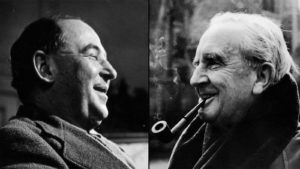
An Inklings meeting was the (usually) Thursday late-evening meeting in CS (‘Jack’) Lewis’s rooms at Magdalen College, Oxford; to read work in progress, criticize it, and have conversations arising from this.
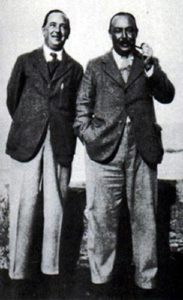
The Lewis Brothers
It is important to recognise that the focus of the Inklings was the writing of its members; even though one of the members – Robert E ‘Humphrey’ Havard – did little writing, and that mostly of a scientific nature (he was JRR Tolkien and CS Lewis’s doctor).
Havard and Warren (‘Warnie’) Lewis functioned mainly as an enthusiastic and critical ‘audience’ for the three main writers: Jack Lewis, Tolkien (nicknamed ‘Tollers’) and Charles Williams. Of course there were many other guests, readers and conversationalists during the fifteen or so years that the Inklings were active.
These true Inklings meetings probably began in the early 1930s and finished in October 1949 – when Warnie Lewis recorded for the first and final time that nobody had shown-up for a scheduled meeting – except himself and his brother Jack.
The Inklings was not, therefore, the Tuesday (later Monday) lunchtime gatherings at various pubs in Oxford, again focused on Jack Lewis, which happened especially at the ‘Bird and Baby’ pub (a slang term for the Eagle and Child), or sometimes at the Lamb and Flag situated opposite.
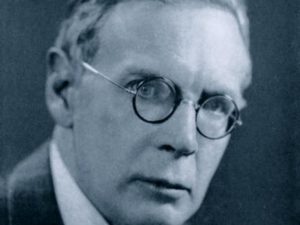
Charles Williams
These lunchtime pub meetings were certainly attended by The Inklings, but also a wide range of others on a casual basis; and they were occasions for general, mostly light, conversation. These informal, convivial meetings continued until Jack Lewis’s death in 1963.
There is no direct transcript of an actual Inklings evening, featuring the actual people who attended. The nearest to this are a few, paragraph length, summary entries in Warnie Lewis’s diary – a selection from which is published in Brothers and Friends: the diaries of Major Warren Hamilton Lewis edited by Marjorie Lamp Mead (1988).
The best known word-by-word depiction of an Inklings meeting is a chapter in Humphrey Carpenter’s group biography The Inklings (1978); which is not an actual meeting, but one that he creatively reconstructed by sampling and synthesizing from multiple writings of the Inklings, together with hints from Warnie’s diary. This features the Lewis brothers, JRR Tolkien, Havard and Charles Williams – and these seem to have been the core Inklings of the 1939-45 war years. The only survivor – Havard – endorsed Carpenter’s account as providing the genuine flavour, although probably more intellectually concentrated than a typical real meeting.
JRR Tolkien’s The Notion Club Papers (an unfinished and posthumously published novel to be found in Christopher Tolkien’s edited The History of Middle Earth, Volume 9, Sauron Defeated, 1992) comprises a highly Inklings-style meeting of a club that was based explicitly upon The Inklings and written to be read at Inklings meeting during 1945-6; but with different, fictionalized and composite participants. This probably captures the spirit of an Inklings meeting more closely than any other source.
CS Lewis also left a short depiction of an Inkling’s-esque meeting which can be found in an unfinished fragment of a story named The Dark Tower, and which was posthumously edited and published by Walter Hooper in 1977. The tone of discussion – its mixture of humour and seriousness – is similar to that of the Notion Club.
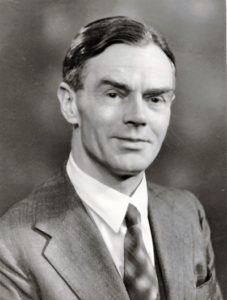 Owen Barfield was an infrequent, but very keen, Inklings participant – and arguably the Inklings evolutionarily-arose from the Barfield-Jack Lewis conversations and written debates of the 1920s. Barfield published a novel entitled Worlds Apart (1963) which describes a weekend length conversation of a very Inklings-like character – including characters based on Barfield and Jack Lewis.
Owen Barfield was an infrequent, but very keen, Inklings participant – and arguably the Inklings evolutionarily-arose from the Barfield-Jack Lewis conversations and written debates of the 1920s. Barfield published a novel entitled Worlds Apart (1963) which describes a weekend length conversation of a very Inklings-like character – including characters based on Barfield and Jack Lewis.
What was the key to the Inklings as a club? My guess is that it worked and kept-on working because of the friendship between the participants; but to keep going for so long and with such intensity, the meetings required two further elements.
The first was the shared serious focal element of being helpful with the writing of CS Lewis and JRR Tolkien; indeed the club was absolutely vital to the writing of The Lord of the Rings.
The second element was that – especially from the perspective of Jack and Tollers, these writings had a broad cultural significance; they were Christians who were fascinated by myth and the imagination as things of real importance and modes of truth. In other words; the Inklings meetings were (for CSL and JRRT specifically) not only enjoyable and helpful – they were doing something important.
And this is where the – mostly absent – Owen Barfield came in; because he was the philosophical theorist among the Inklings, whose life’s work was to explain exactly why – and in exactly what sense – myth and imagination were important, real and true.
This is why, I believe, the Inklings was so much more than a fluid assembly of Jack Lewis’s friends (as Humphrey Carpenter regarded them), and so much more than a writers’ workshop (as DP Glyer regards them, see Note). The Inklings were, and are, a group of major cultural significance; which is why public interest in these men and their private meetings has grown significantly with every decade over the past seventy years.
Note: For further discussion of sources relating to the Inklings, see Diana Pavlac Glyer’s The Company They Keep (2008). This important book is a very thorough and enjoyable account of the Inklings as writers, and of their interactions. But DPG is not, as I am, in profound sympathy with the core Inkling ‘philosophy’.
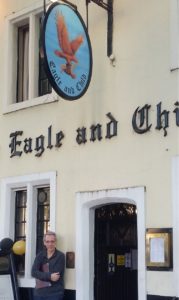



Thank you for putting the pieces together and giving us an overview.